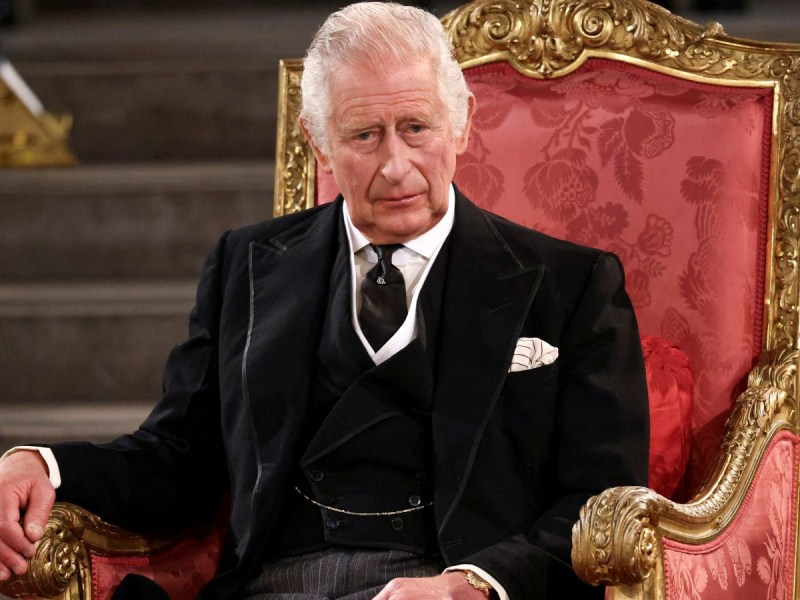Every now and then, the public is reminded just how ancient the traditions of the British royal family truly are. No event quite encapsulates royal antiquity like the coronation of a new monarch. As the firm prepares for King Charles III’s coronation next spring, they are getting all of their ducks in a row. One of those ducks is an ancient Scottish relic that’s sat in Edinburgh Castle for over 26 years.
Videos by Suggest
The Stone Of Scone Is An Important Scottish Relic
Since the King of England also reigns over Scotland, an important relic from the country is included in coronation traditions. Since the 17th century, British monarchs have sat upon the Stone of Destiny, also known as the Stone of Scone, to be crowned. In May of next year, the stone will return to the coronation chair for King Charles to take his official seat as the King of England. However, the stone has a long history that predates its place in royal English tradition.
RELATED: Kate Middleton Wants People To Stop Being Ashamed Of Their Addictions: ‘[It] Can Happen To Anyone’
The artifact is a large slab of red sandstone that weighs approximately 335 lbs. It is recognizable due to the roughly carved cross on its surface and the two iron rings fastened at each end. According to Edinburgh Castle’s website, the Stone of Destiny sat on Moot Hill in the geographical region of Scone before it arrived at Westminster. The Hill served as the official crowning place of Scottish kings after Kenneth I brought the stone to the hill in 843 A.D. From that year onward, Scottish kings sat upon the stone to be crowned—including Macbeth in 1040.
King Edward I took the stone as a spoil of war in 1296 and had it fitted into a large wooden chair. Of course, that chair became known as King Edward’s Chair, and most subsequent English sovereigns have been crowned while sitting on the historical throne. The stone remained in the chair for over six centuries. However, a replica of the stone sits on Moot Hill in front of a chapel, providing a powerful image of how the stone was once utilized by its first kings.
Some Believe That The Stone Is A Fake
During its history, the stone has been stolen multiple times. On Christmas Day in 1950, four Scottish students stole the stone from its resting place in Westminster Abbey. Eventually, the relic was found 500 miles away at the high altar of Arbroath Abbey, not far from its historical resting place. This, along with many other gaps in the stone’s history, has prompted historians to question the authenticity of the stone.
There remains speculation that the stone was, at one point in time, replicated. However, having no proof for these theories, the stone is still upheld as a genuine Scottish relic. Yet, because of that cultural significance, there has also been discourse over the years as to where it should rest. This prompted the crown to return the stone back to Scotland in 1996. Today, the relic sits in the Crown Room in Edinburgh, Scotland. It, along with many other priceless relics, is considered one of the Honours of Scotland.
The Stone Of Destiny Will Return To England
Since 1996, the stone has sat in the possession of its ancestral country. However, it is still considered an important part of British coronations. When Queen Elizabeth sat in King Edward’s Chair in 1953, the stone was firmly fitted beneath her. Since it was repossessed by Scotland all those years ago, there’s been some confusion as to if the stone will be used in King Charles III’s upcoming coronation.
According to the BBC, The palace has confirmed that in May of next year, the stone will be returned to Westminster Abbey for the first time in over 26 years. However, there’s a chance that the stone won’t return to Edinburgh after King Charles is crowned. In 2020, the First Minister of Scotland, Nicola Sturgeon, announced that there were plans in place to relocate the Stone of Destiny back to its historical resting place in Perth, Scotland.
RELATED: Will King Charles Make Prince Edward The Duke Of Edinburgh Like Their Father Intended?
“The Stone of Destiny, also known as the Stone of Scone, forms an important part of the story of Scotland. Following due consideration the Commissioners were satisfied that the proposals for Perth City Hall gave full and proper regard to the need to ensure the security and conservation of the Stone, its accessibility to the general public and that it would be displayed in a manner in keeping with such an important cultural artifact,” Sturgeon announced.
That very year, the BBC reported that the Scottish government had announced plans to construct a new museum at Perth City Hall, scheduled to open in 2024. The Stone of Destiny will serve as a centerpiece for the historical sight. It’s obvious that the stone is an extremely valued piece of Scottish history, and its use in King Charles’ crowning will be no small gesture.
